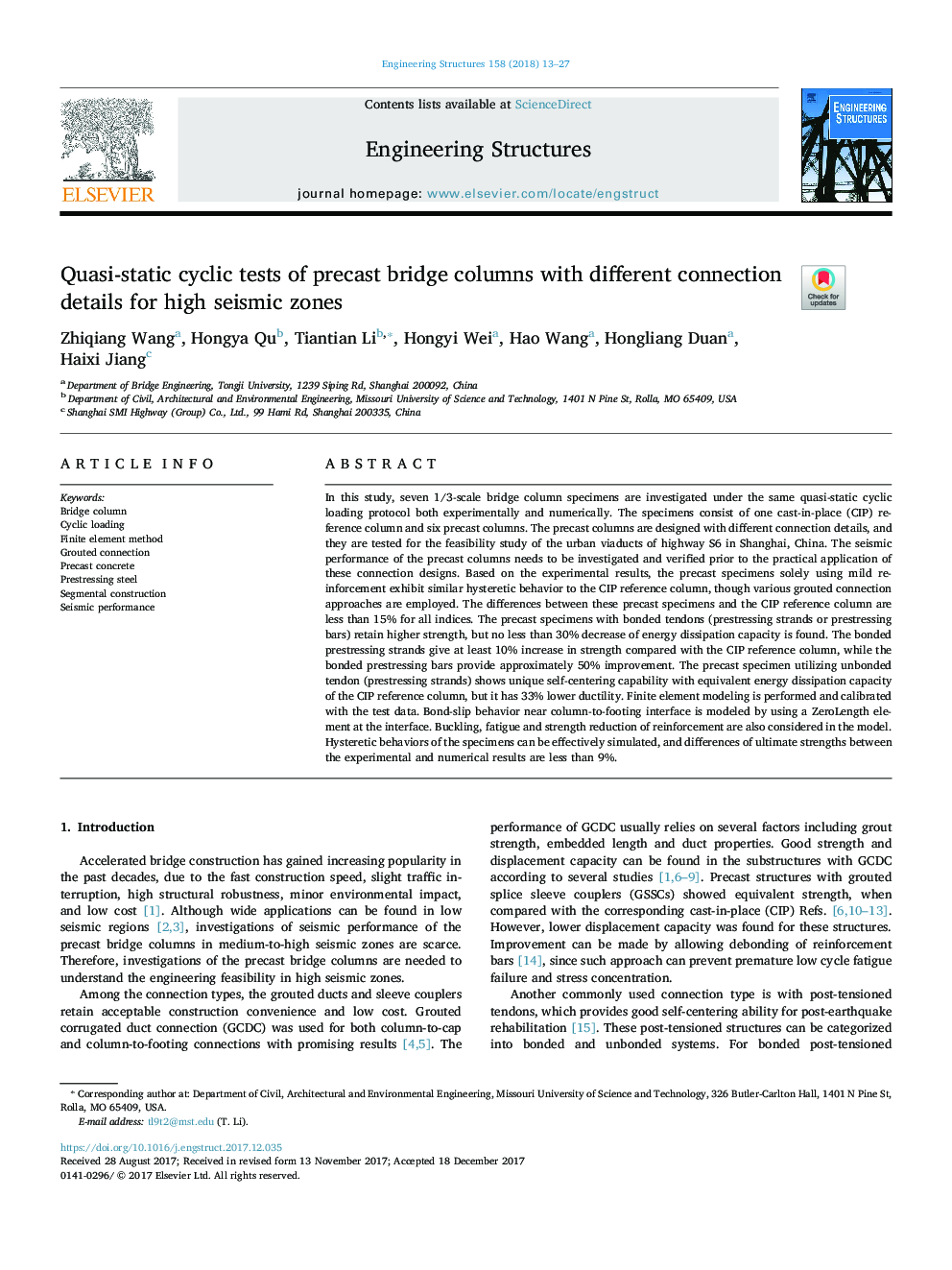| کد مقاله | کد نشریه | سال انتشار | مقاله انگلیسی | نسخه تمام متن |
|---|---|---|---|---|
| 6738614 | 1429069 | 2018 | 15 صفحه PDF | دانلود رایگان |
عنوان انگلیسی مقاله ISI
Quasi-static cyclic tests of precast bridge columns with different connection details for high seismic zones
ترجمه فارسی عنوان
تست های چرخه ای نیمه استاتیک از ستون های پل های پیش ساخته با جزئیات اتصال مختلف برای مناطق لرزه ای بالا
دانلود مقاله + سفارش ترجمه
دانلود مقاله ISI انگلیسی
رایگان برای ایرانیان
کلمات کلیدی
موضوعات مرتبط
مهندسی و علوم پایه
علوم زمین و سیارات
مهندسی ژئوتکنیک و زمین شناسی مهندسی
چکیده انگلیسی
In this study, seven 1/3-scale bridge column specimens are investigated under the same quasi-static cyclic loading protocol both experimentally and numerically. The specimens consist of one cast-in-place (CIP) reference column and six precast columns. The precast columns are designed with different connection details, and they are tested for the feasibility study of the urban viaducts of highway S6 in Shanghai, China. The seismic performance of the precast columns needs to be investigated and verified prior to the practical application of these connection designs. Based on the experimental results, the precast specimens solely using mild reinforcement exhibit similar hysteretic behavior to the CIP reference column, though various grouted connection approaches are employed. The differences between these precast specimens and the CIP reference column are less than 15% for all indices. The precast specimens with bonded tendons (prestressing strands or prestressing bars) retain higher strength, but no less than 30% decrease of energy dissipation capacity is found. The bonded prestressing strands give at least 10% increase in strength compared with the CIP reference column, while the bonded prestressing bars provide approximately 50% improvement. The precast specimen utilizing unbonded tendon (prestressing strands) shows unique self-centering capability with equivalent energy dissipation capacity of the CIP reference column, but it has 33% lower ductility. Finite element modeling is performed and calibrated with the test data. Bond-slip behavior near column-to-footing interface is modeled by using a ZeroLength element at the interface. Buckling, fatigue and strength reduction of reinforcement are also considered in the model. Hysteretic behaviors of the specimens can be effectively simulated, and differences of ultimate strengths between the experimental and numerical results are less than 9%.
ناشر
Database: Elsevier - ScienceDirect (ساینس دایرکت)
Journal: Engineering Structures - Volume 158, 1 March 2018, Pages 13-27
Journal: Engineering Structures - Volume 158, 1 March 2018, Pages 13-27
نویسندگان
Zhiqiang Wang, Hongya Qu, Tiantian Li, Hongyi Wei, Hao Wang, Hongliang Duan, Haixi Jiang,
